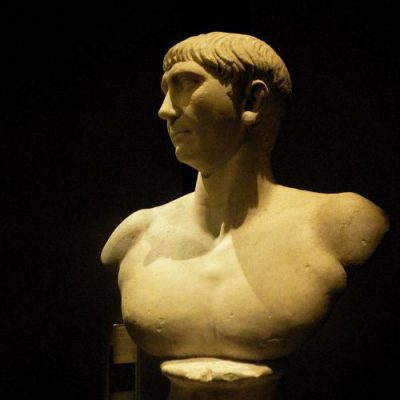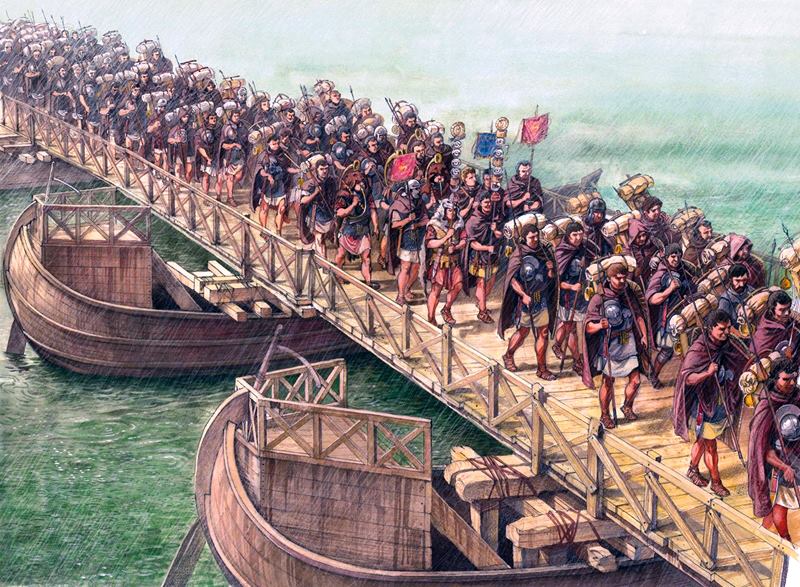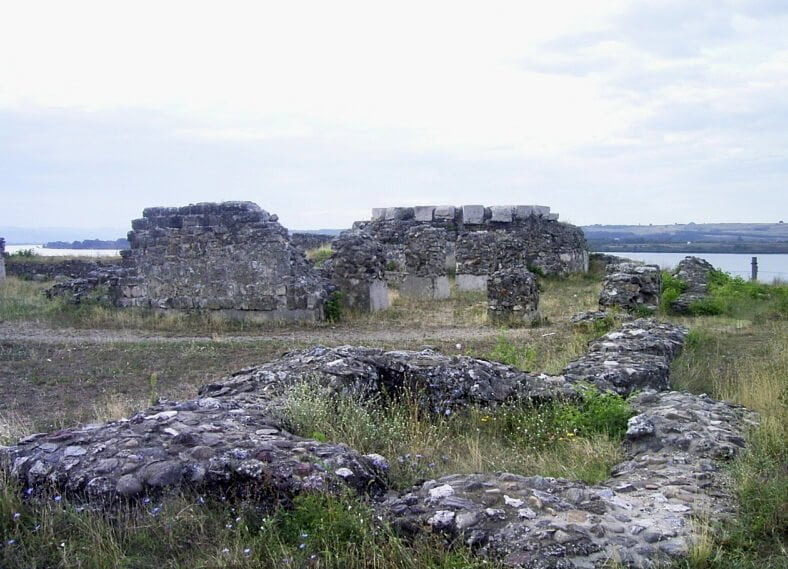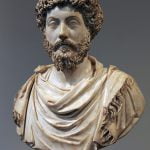Chapters
Dacian wars were the two Emperor Trajan campaigns that took place in 101-102 and 105-106 CE. As a result, the Roman province of Dacia was created.
Genesis and the First Dacian War
In the first century CE, Roman policy dictated treaties to surrounding tribes and countries that required recognition of Rome’s authority. Such conditions were not accepted by the Dacians of King Duras, who in the winter of 85 to 86 CE led by Diurpaneus, they attacked the Roman province of Moesia. As a result of the attack, the governor of the province, Oppius Sabinus, a former consul, was killed.
At the head of the Roman army to oppose the Dacians was Emperor Domitian himself, who defeated the enemy forces and divided Moesia into Inferior and Superior. After reorganizing the provinces and planning an invasion, he began in 87 CE for the campaign, known as the First Dacian War. The Dacian commander Diurpaneus turned to the emperor with a proposal for peace, which was, however, rejected. Praetorian Prefect Cornelius Fuscus, led by 5-6 legions, crossed the Danube on a bridge made of ships. Unexpectedly, the Roman army was trapped and destroyed at Tapae, and the victorious leader of Dacia assumed the nickname Decebalus (“Conqueror”) and was elected the new king. Fuscus was killed and the legions lost their legionary marks.
Two years after the defeat in the Carpathians at Tapae, the Romans led by Tetius Julianus were defeated by Decebalus in the Carpathian Iron Gates (also at Tapae, now Luminis). Emperor Domitian did not take advantage of this victory – after the news of the rebellion of the Rhine legions and the aggressive attitude of the neighbouring Pannonia of the Iazyges, he concluded a peace treaty with the Dacians in 89 CE. Decebalus kept his kingdom in exchange for recognizing Rome’s authority.
In keeping with the peace, Decebalus became a client of Rome – in return for the recognition of his title Rex Amicas. Dak received money, craftsmen and war machines to help him guard the borders. Some historians claim that the signed treaty was highly humiliating for the powerful Roman Empire and the decision to sign it directly influenced the murder of Domitian in 96 CE. Despite relative cooperation, relations between Rome and Dacia deteriorated.
The end of the 1st century CE was a time of weaker state finances of the Empire, which were largely devoted to maintaining an active army. In addition, as a result of Nero’s decision to lower the amount of gold in coins, Roman money depreciated. In Roman society, in turn, a rumour of rich gold mines in Dacia, which only increased interest in the region.
The Dacians distinguished themselves from the other barbarian tribes of the period by the fact that they had large stocks of iron and copper and were good artisans. A large percentage of the warriors had swords, which reduced the advantage of the Romans in the clash. In addition, Dacia was able to put 250,000 people to fight, given the fact that she would enter into an alliance with other peoples hostile to the Romans. The empire did not have a prepared border defence plan in the event of an invasion by an extremely numerous and wealthy rival. Taking all this into account, the new Roman emperor Trajan (reigning since 98 CE) began to organize a campaign to eliminate the threat and secure the northern border.
First Dacian War of Trajan in 101-102 CE
After receiving a blessing from the Senate in 101 CE The Romans once again struck Dacia. A pontoon bridge was used to cross the Danube. As it turned out, this war was to be evidence of the ingenuity and high military skills of the Romans. The army was divided into two columns, which were burning towns and villages while marching towards the “heart” of Dacia.
After crossing the Danube, the Roman army, led by Emperor Trajan, defeated the enemy at the Danube Iron Gate at Tapae. In 102 CE the Romans captured the more important mountain fortresses around the capital of the Daks, Sarmizegetusa. Decebalus, after a series of Roman victories, again asked for peace. In accordance with its provisions, Decebalus received a guarantee of support from the Romans in the fight against migrating peoples of the north. However, he was forced to relinquish some of the territories. King of Dacia, however, did not accept the latter terms of peace, and soon his troops stormed into Moesia.
Second Dacian War of Trajan in 105-106 CE
In 105 CE there was another Roman campaign against Dacia. A specially built permanent Trajan’s Bridge, designed by Apollodorus of Damascus, was used for the crossing. The bridge was built in two years in the present city of Drobeta-Turnu Severin in Romania (lower Danube) and was over a kilometre long. This bridge as well as the previous one was immortalized on Trajan’s column.
A series of quick victories and the express and effective decisions of the Romans allowed dominating the opponent. The Romans approached the capital of the Daks, Sarmizegetusa, and began blocking it. The city capitulated in the summer of 106 CE. During the fighting on the Roman side, the legions II Adiutrix, IV Flavia Felixi and a unit (vexillatio) with VI Ferrata took part. The Roman army was helped by a treacherous local noble who found and destroyed the water pipes. Depleting supplies of drinking water and food forced the inhabitants to surrender.
Decebalus, along with some of his troops, fled to fight the final battle of Porolissum (today’s Moigrad in Romania). After the defeat, he committed suicide. The dying king was found by the legionary Maximus, who delivered his head to the emperor. Thanks to the information of Decebalus’ trusted advisor Bicilis, a hidden fortune of 165.500 kg gold and 331.000 kg of silver was found in the Sargesia/Sargetia river. Eventually, Dacia became a Roman Province.
Consequences
The war with Dacia led by Trajan turned out to be a great triumph for the Roman army. The emperor announced 123 days of public celebration throughout the Empire. Dacia’s rich gold mines were secured and, according to current estimates, the new province donated 700 million denarii annually to the treasury of Rome. These enormous revenues allowed to carry out numerous reconstructions in cities throughout the Empire and to secure finances for subsequent war campaigns. To this day, we can see the remains of intense mining in the region, such as the present Roșia Montană in Romania.
As a result of the war, 100,000 male slaves were sent to the capital, and to avoid future revolts by the Dacians, two legions remained in the Dacia province: XIII Gemina and V Macedonica. The newly established province Roman – Dacia consisted of the southern lands of the region; the northern part remained free, but never constituted a state entity.
Remains of Trajan’s Bridge.Two victorious dak wars proved that Trajan was a good administrator, ruler and, above all, a leader. The emperor gained the recognition and admiration of his subjects. The victorious campaigns de facto ushered in a coming period of peace and prosperity in the Empire. Trajan began to carry out intensive construction works that put the Roman state on the path of development.














